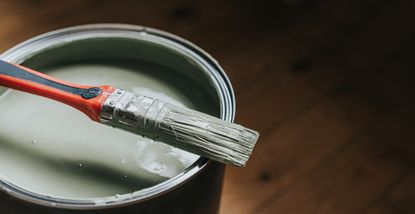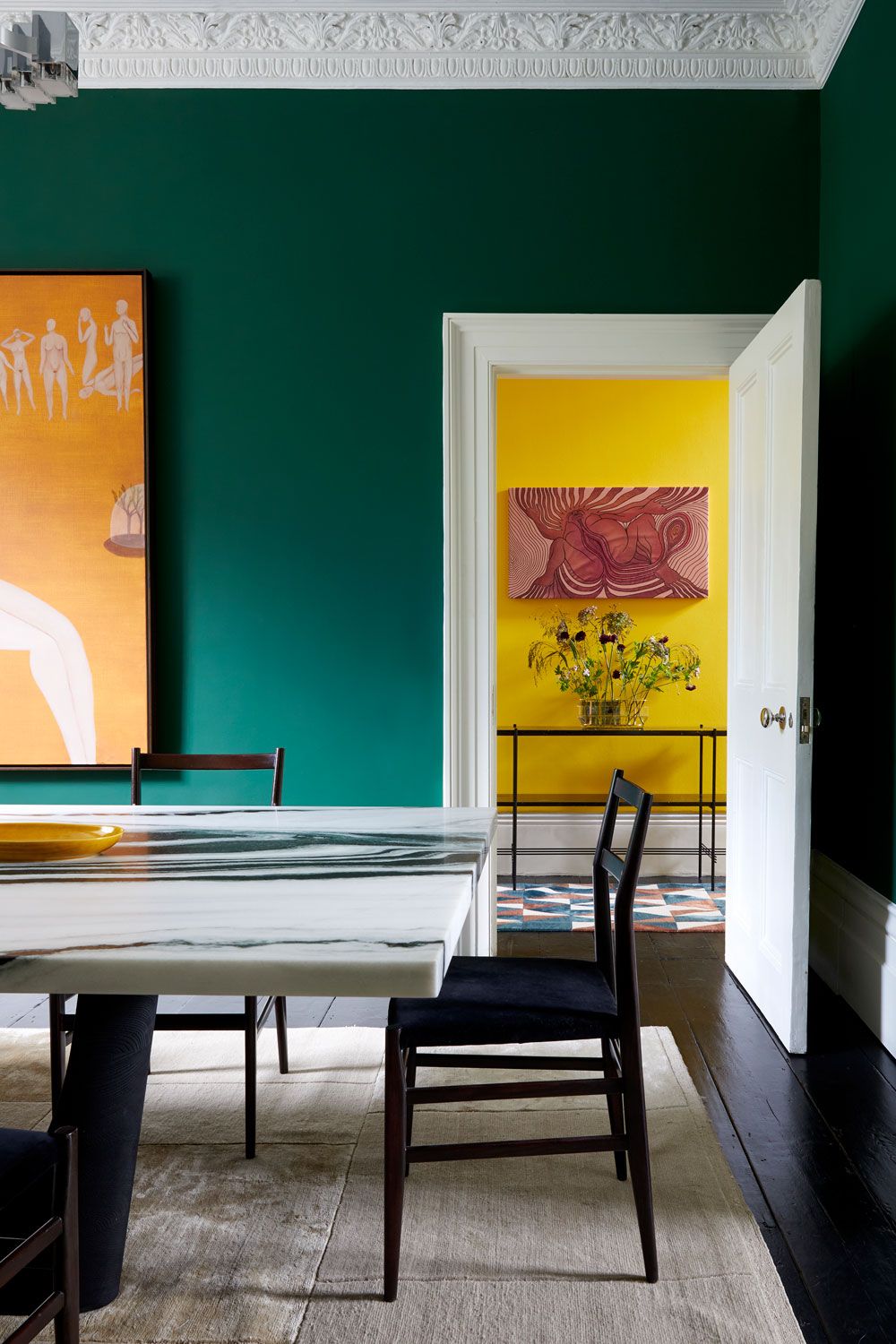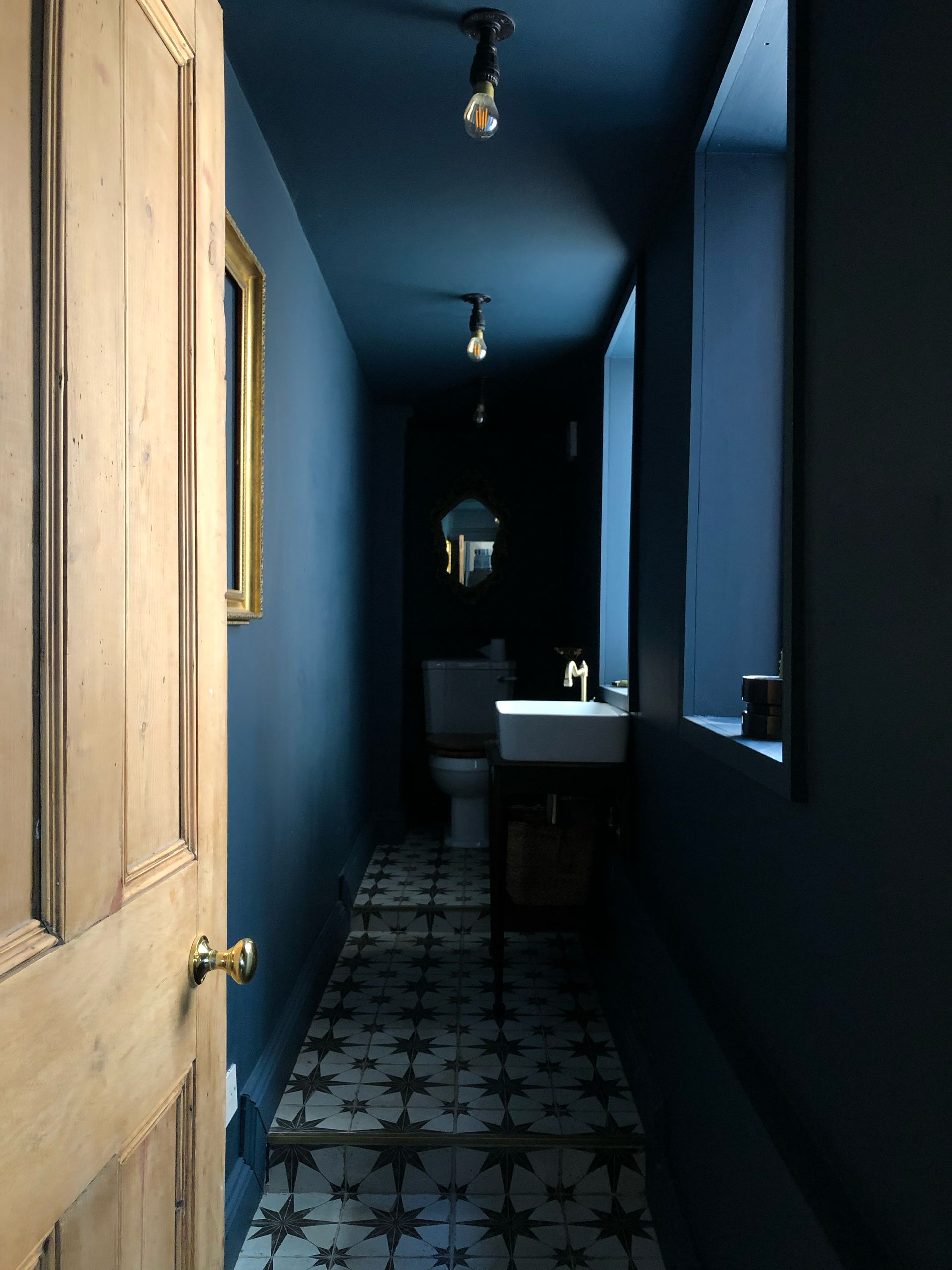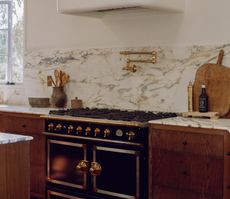5 signs your paint has gone "bad" – experts explain how to know if your leftover cans are safe to use
To ensure no mishaps when decorating your home, you'll need to check any leftover paint is still good to use


With so much expert advice out there on how to paint a room to achieve a perfect finish, it's easy to find the confidence to approach our own DIY paint projects. What we're less well versed in, however, is ordering the right amount of paint. More often than not, we finish a project and we're left with an excess of paint that ends up sitting around, and while you might get around to using it eventually, you just have to ensure it hasn't gone "bad".
You might not know, but paint has an expiry date, and once the can is opened the clock starts ticking. If stored correctly it can last for up to two years, but it's essential that you check it hasn't gone bad as this is the quickest way to ruin a fresh paint idea. To save you from disaster, here are five steps to check if yours is still good to use.
1. Consistency

One of the most obvious signs your paint has gone bad is by checking the consistency. 'After stirring or mixing, the paint should have a smooth texture,' explains paint expert Tony Adams of DIY Geeks. 'That means no chunks, lumps, or cottage cheese-like texture.'
Even with proper storage of your paint, separation can eventually occur. 'Over time, the components in the paint may separate, leaving a thick, gooey substance at the bottom with a watery layer on top,' Tony adds. 'While it's normal for some paint to have a little separation that can be resolved with a good stir, excessive separation is a red flag.' So, if you're working with leftover paint, start by giving it a quick stir to check the consistency is normal.
2. Smell
Our sense of smell is always reliable when it comes to identifying paint that's past its best, so if you're hit with a bad stench when you open an old can, it's important that you throw it away. 'Bad paint actually smells a lot like expired dairy,' says paint expert and CEO of Improovy, Andre Kazimierski. This is caused by a build-up of bacteria and mold that began to develop as soon after you first opened the pot.
Remember, though, when it comes to how to dispose of paint, rinsing it down the sink is never the answer and it should be taken to a local waste center instead.
3. Discoloration

Color is the most important part of paint, so when it changes you know something is up. Over time a paint color can get darker, lighter, or appear almost marbled, due to exposure to sunlight, heat, and dirt. Even if you like the new color, it's important not to use it. The discoloration is a sign of bigger problems, and using bad paint will leave a visibly rough finish that may also peel.
Cutting corners is never worth it, so besides checking your paint is still good to use, ensure you put in the prep work and avoid common painting mistakes for the best finish.
4. Mold or mildew
If there is any sign of mold on your paint - or even the can itself - it's not worth risking. It's easy to overlook the small specks on your can or think you can merely scrape it off, but we're here to tell you that you can't.
'If paint has been stored in a damp area or the can wasn't sealed properly, mold or mildew might develop inside the can,' says Paul Murray, professional painter at Pro Painters Guide. 'The presence of mold, mildew, or fungi on the surface or within the can is an easy spot to tell that your paint has gone bad.'
5. Dry test

If you have checked all items on this list, but are still unsure if your paint is okay to use, try the simple dry test to be certain. To conduct the test, paint a patch on a scrap piece of wood and check how long your paint takes to dry. 'It is likely bad if you conduct a drying test and realize the paint dries with unusual texture or doesn’t dry within the expected time,' advises Paul.
Last but not least, as a rule of thumb, it's always best to err on the side of caution, so if you're still in doubt, it's safest to throw out any lingering cans of paint that are probably past their best.
3 of our favorite shades right now

Size: One gallon
Price: $19.98

Size: One gallon
Price: $70

Size: one gallon
Price: $75
Be The First To Know
The Livingetc newsletter is your shortcut to the now and the next in home design. Subscribe today to receive a stunning free 200-page book of the best homes from around the world.

Amy recently completed an MA in Magazine Journalism at City, University of London, with experience writing for Women’s lifestyle publications across arts, culture, and beauty. She has a particular love for the minimalist aesthetic mixed with mid-century furniture, especially combining unique vintage finds with more modern pieces. Her previous work in luxury jewellery has given her a keen eye for beautiful things and clever design, that plays into her love of interiors. As a result, Amy will often be heard justifying homeware purchases as 'an investment', wise words to live by.
-
 The 12 Best Wayfair Table Lamps Are All Under $200 — And Our Style Editor Wants The Lot
The 12 Best Wayfair Table Lamps Are All Under $200 — And Our Style Editor Wants The LotThese 12 best Wayfair table lamps are the perfect excuse to get a head start on your President's Day sale shopping. With discounts up to 78% off
By Julia Demer Published
-
 Kitchen Utensils Worth Keeping vs the Ones Just Taking up Space — 'It's the Secret to Decluttering Drawers'
Kitchen Utensils Worth Keeping vs the Ones Just Taking up Space — 'It's the Secret to Decluttering Drawers'Declutter and organize your kitchen cabinets and drawers with these expert-approved tips
By Ottilie Blackhall Published

